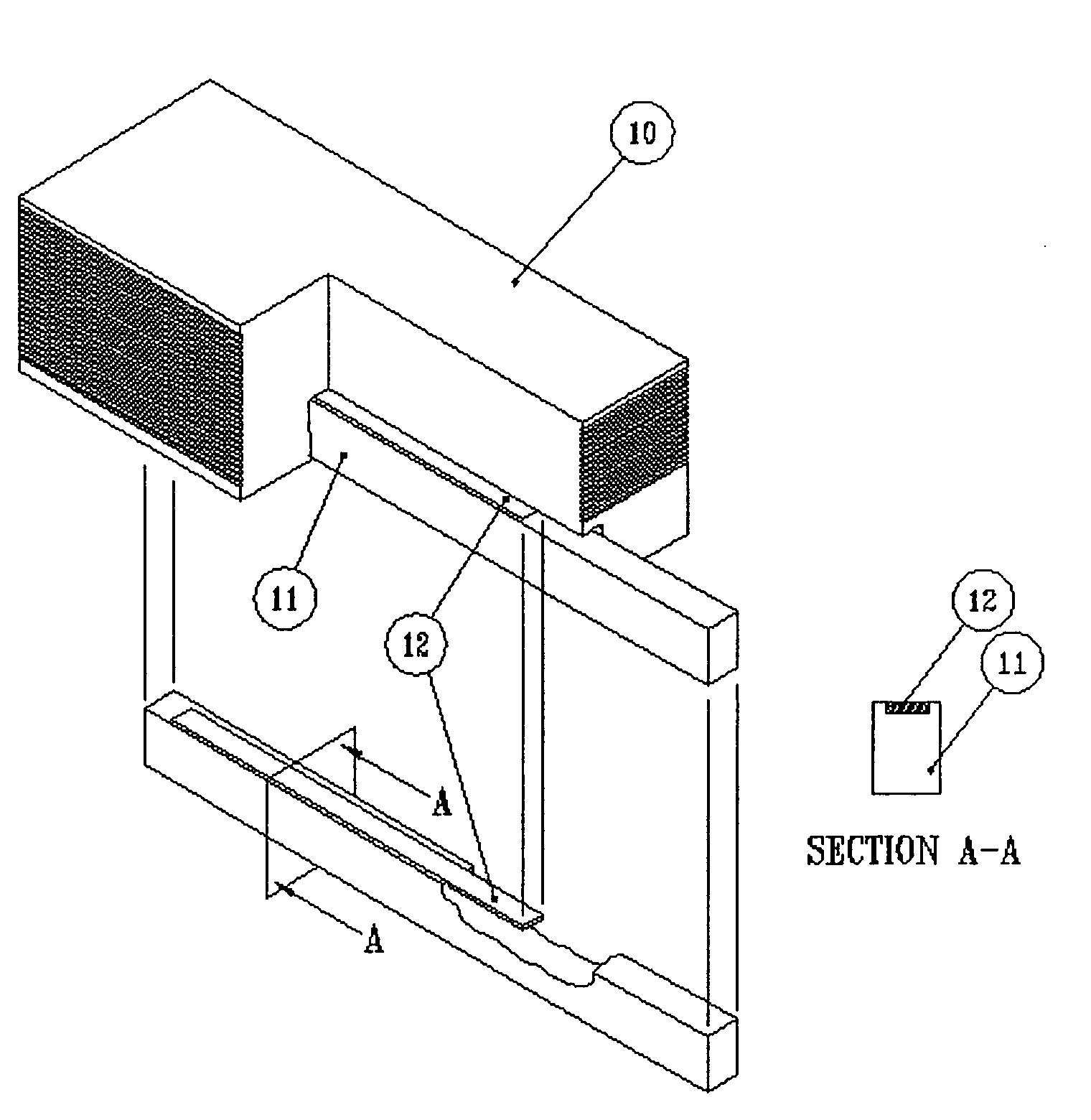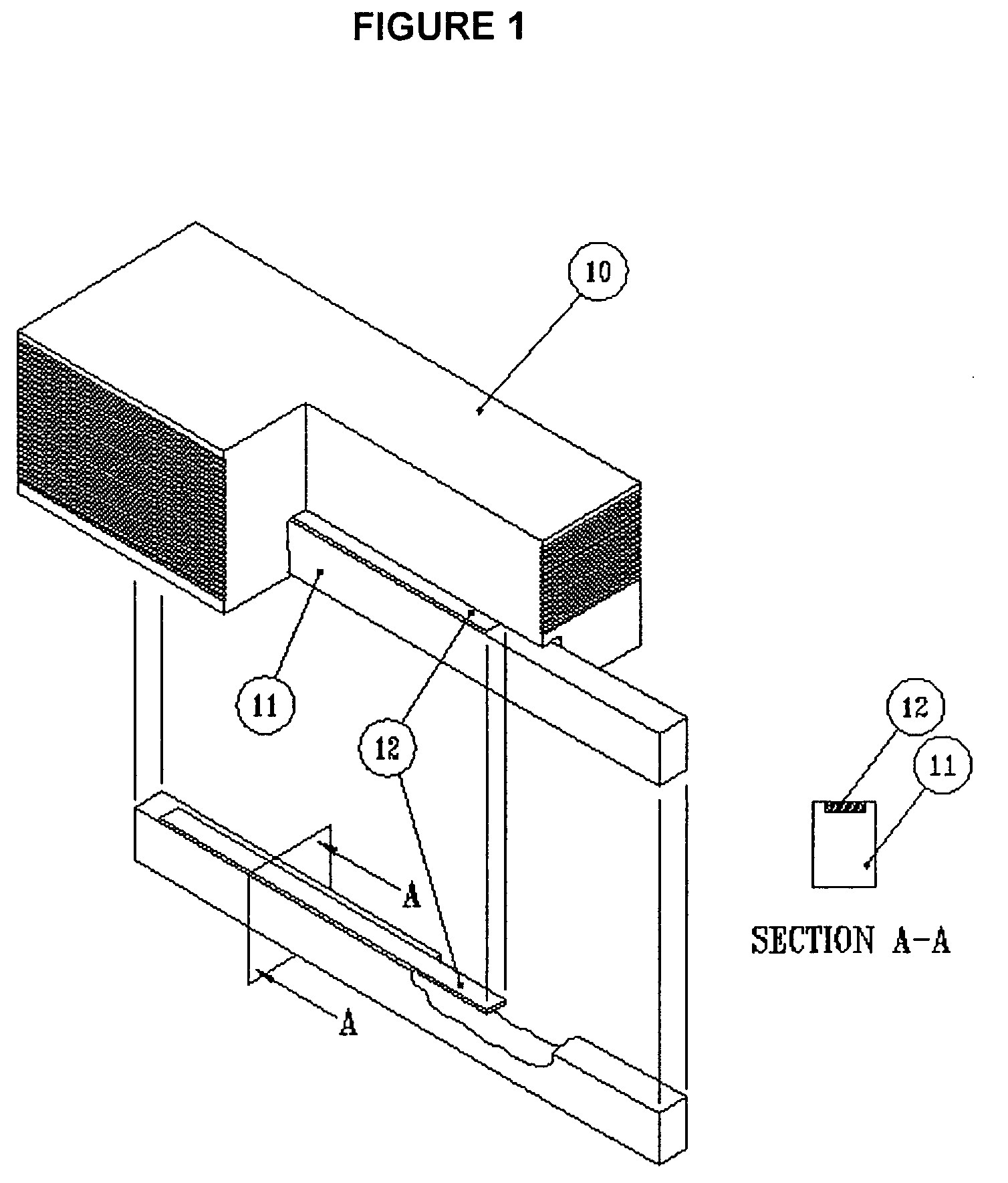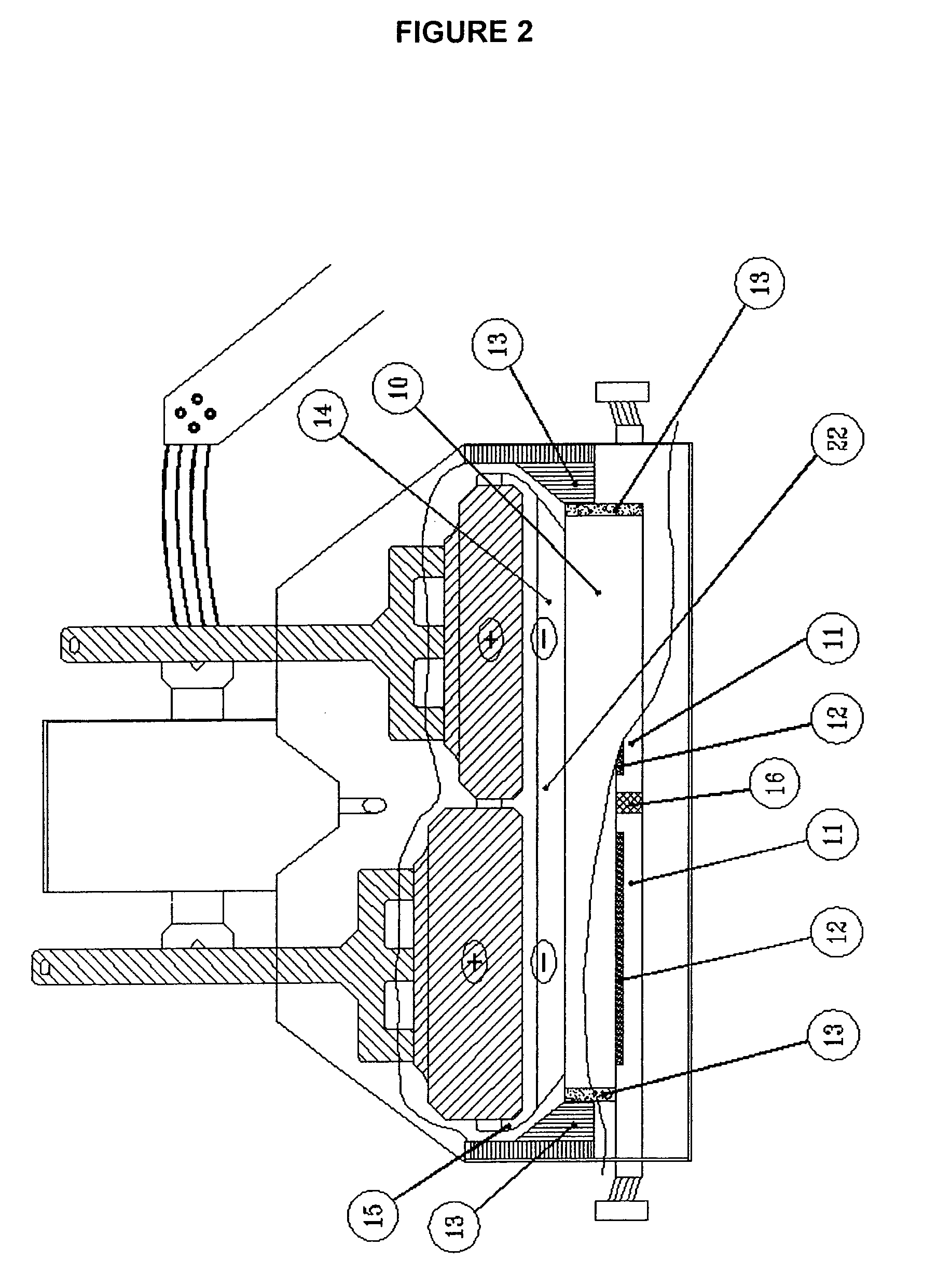Composite collector bar
a collector bar and composite technology, applied in the field of electrolytic reduction cells, can solve problems such as significant increase in consumption, and achieve the effect of minimising heat loss and optimising electrical current distribution
- Summary
- Abstract
- Description
- Claims
- Application Information
AI Technical Summary
Benefits of technology
Problems solved by technology
Method used
Image
Examples
Embodiment Construction
[0031]A preferred embodiment of the invention will now be described with reference to the above drawings.
[0032]Referring to FIG. 1, a collector bar according to an embodiment of the invention is shown. A cathode block 10 is shown having a collector bar fitted within a recess formed in the cathode block 10. The collector bar includes a first conductor 11 which is typically a steel body and a second conductor 12 which is typically formed from a highly conductive metal such as copper fitted into a recess within the first conductor 11. In this embodiment of the invention that portion of the collector bar which houses the conductive insert is located entirely within the cathode block. Cross section A-A (FIG. 1) of the collector bar shows that the second conductor 12 is much thinner than the first conductor 11. The second conductor 12 is located within the upper external surface of first conductor 11 such that the external surface incorporating the second conductor is exposed to the catho...
PUM
| Property | Measurement | Unit |
|---|---|---|
| temperature | aaaaa | aaaaa |
| electrically-conducting | aaaaa | aaaaa |
| electrical resistance | aaaaa | aaaaa |
Abstract
Description
Claims
Application Information
 Login to View More
Login to View More - R&D
- Intellectual Property
- Life Sciences
- Materials
- Tech Scout
- Unparalleled Data Quality
- Higher Quality Content
- 60% Fewer Hallucinations
Browse by: Latest US Patents, China's latest patents, Technical Efficacy Thesaurus, Application Domain, Technology Topic, Popular Technical Reports.
© 2025 PatSnap. All rights reserved.Legal|Privacy policy|Modern Slavery Act Transparency Statement|Sitemap|About US| Contact US: help@patsnap.com



